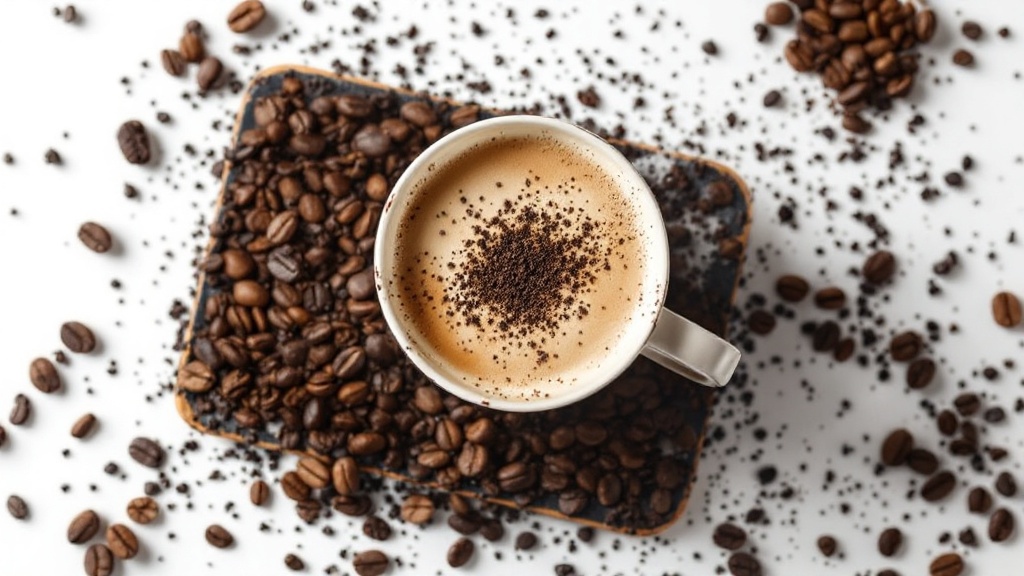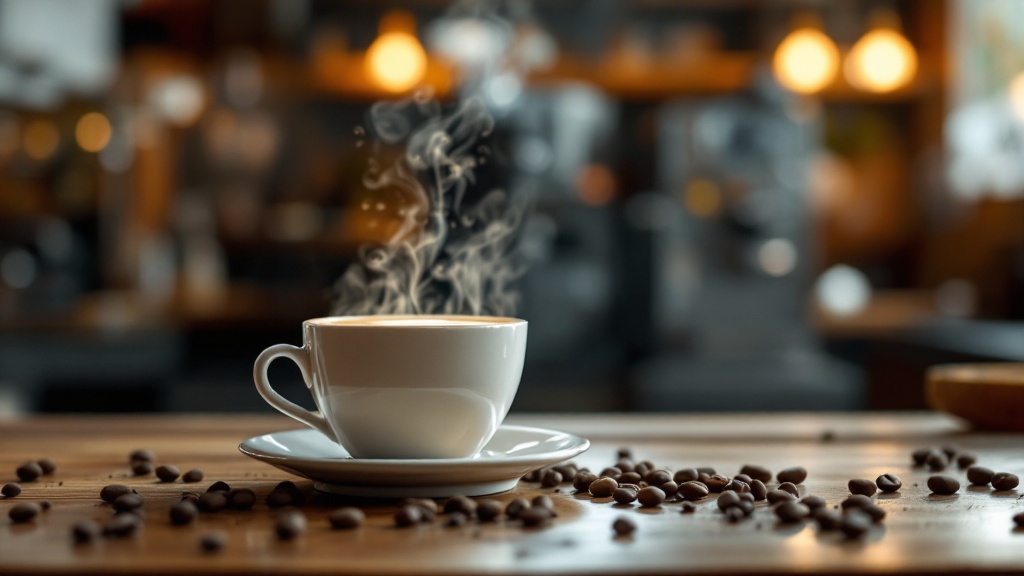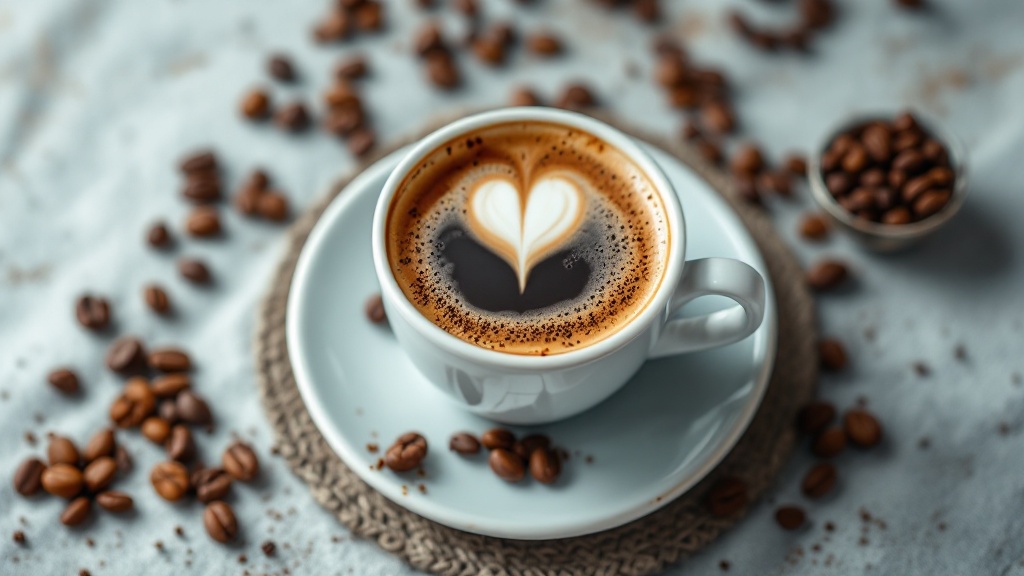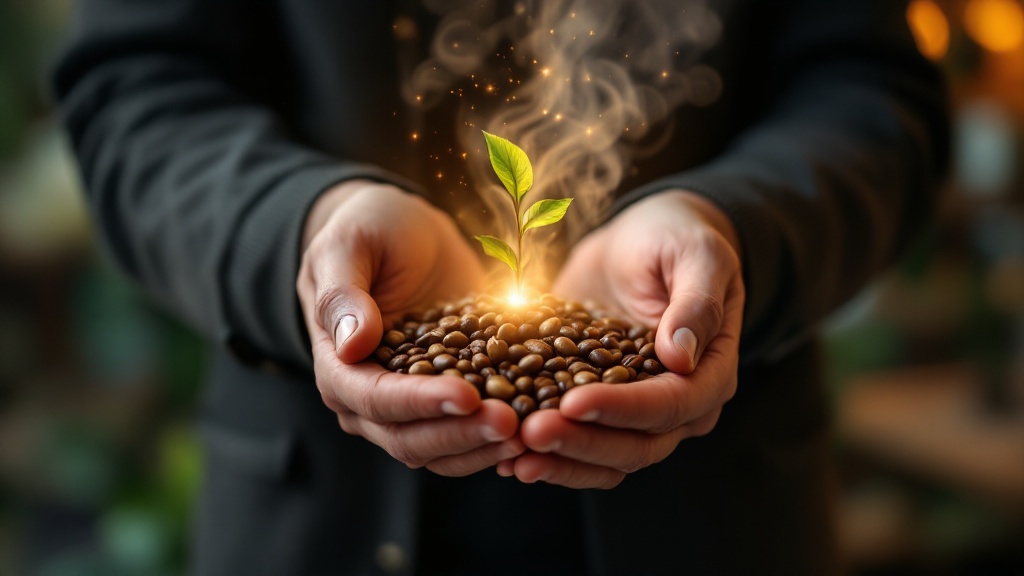Beyond the classic cup of joe, lies a world of exciting coffee creations waiting to be explored. From whipped delights to icy concoctions, the possibilities are as endless as your imagination. This blog post dives deep into the fascinating realm of fun coffee recipes, providing inspiration and guidance to elevate your coffee game. Whether you’re a seasoned barista or a home brewing enthusiast, prepare to embark on a flavor adventure and discover your next favorite coffee masterpiece.
The Rise of Fun Coffee: A Cultural Phenomenon

Coffee’s journey from a simple beverage to a cultural phenomenon is intertwined with the evolution of innovative recipes. While coffee consumption dates back to the 15th century, the explosion of fun coffee recipes can be attributed to the rise of espresso machines and café culture in the 20th century. The invention of the espresso machine allowed for the creation of complex and layered drinks, paving the way for iconic recipes like the affogato, which originated in Italy during the 1950s. This delightful dessert combines the rich intensity of espresso with the cool sweetness of gelato, a perfect example of how contrasting elements can create a harmonious and indulgent experience.
More recently, the digital age has played a significant role in popularizing fun coffee recipes. The viral sensation of Dalgona coffee during the 2020 pandemic is a testament to the power of social media. This whipped coffee drink, made with instant coffee, sugar, and hot water, captivated coffee lovers worldwide with its fluffy texture and visually appealing layers. Platforms like TikTok and Instagram continue to fuel trends, showcasing colorful lattes, layered iced coffees, and other visually captivating coffee creations that inspire both amateur and professional baristas.
Espresso Machine Pressure Profiles
The creation of complex coffee beverages, such as the affogato or various latte art designs, is heavily reliant on the precise control of espresso extraction. This control is primarily achieved through manipulation of the espresso machine’s pressure profile. A pressure profile refers to the graph depicting the pressure applied to the coffee puck (the compressed grounds) over the duration of the extraction, typically around 25-30 seconds. Ideal pressure profiles are not static; they vary based on factors including bean roast level, grind size, and the desired flavor characteristics. A well-defined pressure profile will show a relatively stable pressure plateau after initial pre-infusion (a low-pressure phase to evenly saturate the grounds), followed by a gradual decline towards the end of the extraction. Deviations from this ideal, such as channeling (uneven water flow through the puck) or excessive pressure spikes, negatively impact extraction, resulting in sour or bitter espresso.
- Pre-infusion pressure typically ranges from 1-2 bars, gradually increasing to the target extraction pressure.
- Optimal extraction pressure generally sits between 9 and 10 bars, though this can vary depending on the coffee’s characteristics.
- Pressure profiling can be manually controlled on some machines or automated via programmed settings.
- Channeling, a common problem, leads to uneven extraction and a less balanced espresso taste.
- Different espresso machine types offer varying degrees of pressure control and profiling capabilities.
- Monitoring pressure via a pressure gauge is crucial for consistent and high-quality espresso extraction.
| Key Aspect | Pre-Infusion Pressure | Extraction Pressure | Pressure Control |
|---|---|---|---|
| Espresso Extraction | 1-2 bars | 9-10 bars | Manual or automated |
Trending Now: From Nitro Brews to Upcycled Grounds

The world of coffee is constantly evolving, with new trends emerging and capturing the attention of coffee aficionados. Currently, nitro cold brew reigns supreme, offering a velvety smooth texture and a naturally sweet flavor profile. Infused with nitrogen gas and served on tap, nitro cold brew provides a refreshing and invigorating coffee experience. Another exciting trend is the emergence of coffee pearls, inspired by boba tea. These tapioca balls infused with coffee flavor add a unique and playful twist to iced coffee drinks.
Health-conscious consumers are also driving trends, with a growing interest in recipes that offer both flavor and functional benefits. Matcha lattes, turmeric coffee, and mushroom coffee are gaining popularity due to their perceived health benefits. Plus, sustainability is becoming increasingly important, with consumers seeking eco-friendly options. Recipes using oat milk, reusable coffee filters, and upcycled coffee grounds reflect this growing awareness.
Upcycled coffee grounds, often used to create coffee flour, offer a unique opportunity to minimize waste and create innovative recipes. Coffee flour can be incorporated into baked goods, adding a subtle coffee flavor and boosting the nutritional value. These trends demonstrate the dynamic nature of the coffee industry and its ability to adapt to evolving consumer preferences.
Nitro Cold Brew Infusion
The production of nitro cold brew coffee involves the careful infusion of nitrogen gas into cold brew concentrate, creating a cascading effect and a velvety smooth texture upon dispensing. The process relies on a specific pressure range, typically between 30 and 60 PSI, depending on the desired level of nitrogen saturation and the specific equipment used. Lower pressures result in less intense nitrogen infusion, producing a less creamy texture. Conversely, higher pressures can lead to excessive foaming and a loss of nuanced flavor profiles. Precise control over pressure is achieved using specialized nitro cold brew systems, often incorporating pressure regulators and carbonation stones. These stones, typically made of stainless steel or ceramic, feature a porous structure to facilitate the efficient dispersion of nitrogen gas throughout the cold brew concentrate, ensuring consistent texture and carbonation.
- Optimal dispensing temperature is crucial; around 38-40°F (3-4°C) ensures proper cascading and texture.
- The type of cold brew concentrate significantly impacts the final product; lighter roasts often yield a smoother, less bitter nitro brew.
- Beyond pressure, the infusion time influences nitrogen saturation; longer infusion times generally result in creamier textures.
- Regular cleaning and maintenance of the carbonation stones are essential to prevent clogging and ensure consistent nitrogen dispersion.
- Some systems incorporate a secondary CO2 charge for added fizziness and carbonation, alongside the nitrogen.
- Experimentation with different pressure levels and infusion times is key to achieving the desired texture and flavor profile for a specific coffee bean.
Mastering the Art of Coffee: Techniques & Tips

Creating exceptional coffee recipes requires more than just throwing ingredients together. Understanding the technical aspects of brewing and utilizing the right equipment is crucial. For espresso-based drinks, a quality espresso machine is essential. French presses and pour-over devices are excellent choices for those who prefer a more manual brewing method. Achieving the perfect brew involves understanding brewing ratios, such as the 1:2 ratio for espresso, and maintaining the correct water temperature, typically between 90.5-96.1°C, as recommended by the Specialty Coffee Association (SCA).
Ingredients play a vital role in flavor creation. Specialty coffee beans, graded 80+ on the SCA scale, offer a superior flavor profile compared to commercial grade coffee. Flavored syrups, alternative milks like almond and oat, and spices like cinnamon and cardamom can add depth and complexity to your coffee creations. For example, when making a Dalgona coffee, precise measurements are key: 2 tablespoons of instant coffee, 2 tablespoons of sugar, and 2 tablespoons of hot water, whipped vigorously to achieve the desired frothy consistency.
Milk frothers are essential for creating lattes and cappuccinos, allowing you to achieve the perfect microfoam for latte art. Cocktail shakers are handy for mixing coffee cocktails, while nitro taps are a must-have for dispensing nitro cold brew. Mastering these techniques and utilizing the right equipment empowers you to create professional-quality coffee drinks at home.
Espresso Extraction Optimization
Achieving optimal espresso extraction relies heavily on precise control of several key variables. The most critical factor is the grind size, which directly impacts the rate of water flow through the coffee puck. Too coarse a grind results in under-extraction, yielding a sour, weak espresso with muted flavor notes. Conversely, a grind that is too fine leads to over-extraction, producing a bitter, astringent brew with burnt or acrid characteristics. The ideal grind size is dependent on the specific coffee bean, the espresso machine’s pressure profile, and the desired extraction time, generally targeting a range of 25-30 seconds for a double shot. Achieving consistency requires a high-quality burr grinder capable of producing a narrow particle size distribution, minimizing channeling and ensuring even extraction across the entire puck.
- Water temperature significantly impacts extraction; aim for 195-205°F (90-96°C) for optimal flavor.
- Dose consistency is crucial; use a scale to weigh both coffee grounds (e.g., 18g for a double shot) and the extracted espresso.
- Tamping pressure should be consistent (around 30 lbs) to create an even puck density for uniform water flow.
- Observe the espresso’s color and crema; a rich, reddish-brown crema indicates a well-balanced extraction.
- Experiment with different grind sizes and extraction times to find the optimal settings for your specific beans and equipment.
Coffee Creativity at Home: Recipes to Inspire

Ready to unleash your inner coffee artist? Here are some exciting recipes to get you started:
- Spiced Mocha:Combine espresso, hot chocolate, a pinch of cinnamon, and a dash of nutmeg. Top with whipped cream and a sprinkle of cocoa powder.
- Lavender Latte:Infuse lavender syrup into steamed milk and combine with espresso. Garnish with dried lavender buds.
- Coffee Smoothie:Blend cold brew coffee, banana, spinach, and protein powder for a refreshing and energizing breakfast treat.
- Iced Turmeric Latte:Mix turmeric powder, ginger, cinnamon, and black pepper with warm milk and honey. Pour over ice and top with cold brew coffee.
Remember, these are just starting points. Don’t be afraid to experiment with different flavors and ingredients to create your own signature coffee concoctions. Share your creations on social media and inspire others to join in the fun!
Coffee Extraction Optimization
Achieving optimal coffee extraction relies on precise control of several key variables: water temperature, brew ratio, and grind size. Water temperature significantly impacts the extraction yield and flavor profile. Ideal temperatures generally fall within the range of 195-205°F (90-96°C). Temperatures below this range result in under-extraction, characterized by weak, sour, and acidic flavors, while temperatures exceeding this range lead to over-extraction, producing bitter and astringent notes. The precision of the temperature control is crucial; a variance of even 10°F can noticeably impact the final cup.
- Brew ratio (coffee-to-water) impacts strength; a 1:15 ratio is a common starting point, but this can be adjusted to taste.
- Grind size directly affects water contact time; coarser grinds extract less, while finer grinds extract more.
- Water quality plays a crucial role; filtered water is recommended to avoid off-flavors from minerals.
- Bloom the coffee grounds (a short pre-infusion) to degas and ensure even saturation before brewing.
- Different coffee beans require slightly different extraction parameters for optimal flavor; experiment to find what works best.
The Future of Coffee: Innovation and Sustainability

The coffee industry continues to innovate, with new technologies and trends shaping the future of coffee consumption. AI-powered apps like Barista Brain offer personalized coffee recommendations based on user preferences, taking the guesswork out of recipe creation. The development of coffee pearls and the increasing use of upcycled coffee ingredients demonstrate a commitment to both creativity and sustainability. As consumers become more conscious of their environmental impact, the demand for eco-friendly coffee practices will continue to grow.
The Specialty Coffee Association (SCA) plays a vital role in promoting industry standards and best practices, ensuring the quality and sustainability of coffee production. By adhering to SCA guidelines, coffee professionals can contribute to a more sustainable and ethically responsible coffee industry. As James Hoffmann, World Barista Champion, emphasizes, quality beans and precise brewing techniques are the foundation for creating exceptional coffee experiences.
The future of coffee is bright, with endless possibilities for innovation and exploration. By embracing creativity, sustainability, and a passion for quality, we can continue to elevate the coffee experience and discover new and exciting ways to enjoy this beloved beverage.
AI-Driven Coffee Extraction Optimization
The application of Artificial Intelligence (AI) in coffee brewing represents a significant advancement in achieving consistent and optimized extraction. AI-powered systems, such as those integrated into smart brewing devices or sophisticated apps like Barista Brain, leverage machine learning algorithms to analyze vast datasets of brewing parameters. These datasets typically include variables like water temperature (measured to a precision of ±0.1°C), brew time (accurate to the second), coffee-to-water ratio (expressed as a percentage or gram-to-milliliter ratio), grind size (measured using a particle size distribution analyzer), and the resulting extraction yield (often determined via spectrophotometric analysis of the brewed coffee’s Total Dissolved Solids – TDS). Through regression analysis and other machine learning techniques, these systems can identify optimal combinations of these parameters to achieve a desired flavor profile, minimizing undesirable compounds and maximizing desirable ones. This is particularly beneficial for large-scale commercial operations, allowing for consistent quality across many cups brewed throughout a day.
- AI models can predict optimal grind size based on bean origin and roast level for consistent extraction.
- Some systems use sensor data (e.g., water pressure, flow rate) to further refine extraction parameters in real-time.
- Beyond TDS, AI can analyze other chemical compounds in coffee via techniques like mass spectrometry for advanced flavor profiling.
- Commercial applications include automated quality control, reducing waste from suboptimal brews.
- Home brewing apps can personalize AI-driven recommendations based on user taste preferences and bean characteristics.
Conclusion

The world of fun coffee recipes is a vibrant and ever-evolving landscape, offering endless opportunities for exploration and creativity. From classic Italian delights like the affogato to modern innovations like nitro cold brew and coffee pearls, there’s a coffee creation for every palate and preference. By embracing quality ingredients, mastering essential techniques, and staying informed about the latest trends, you can embark on a flavorful journey and discover your own signature coffee masterpieces. So, grab your favorite beans, gather your equipment, and get ready to unleash your inner coffee artist. The possibilities are as endless as your imagination.
Optimizing Extraction Yield
Achieving optimal extraction yield in coffee brewing is paramount to realizing the full flavor potential of the beans. This involves manipulating several key variables, primarily grind size, water temperature, and brew time. A finer grind size increases surface area, leading to faster extraction, but excessively fine grinds can result in over-extraction and bitterness, characterized by astringency and a burnt, acrid taste. Conversely, coarser grinds lead to under-extraction, yielding a sour, weak cup lacking body and nuanced flavor notes. The optimal grind size is dependent upon the brewing method; for example, espresso requires a significantly finer grind than pour-over methods.
- Water chemistry (TDS, pH) significantly impacts extraction; lower TDS can lead to under-extraction.
- Coffee-to-water ratio directly affects the concentration and strength of the final brew.
- Bloom time (initial saturation of grounds) is crucial for even extraction and maximizing flavor.
- Agitation/stirring during brewing helps ensure consistent water contact with grounds.
- Bean age and storage conditions affect extractable compounds and ideal grind size.
- Different brewing methods have different optimal extraction targets (e.g., espresso aims for higher extraction than drip).
| Key Aspect | Grind Size | Water Temp | Brew Time |
|---|---|---|---|
| Espresso | Finer grind | Higher temp | Shorter time |
| Pour-Over | Coarser grind | Lower temp | Longer time |
| Nitro Cold Brew | Coarse grind | Cold water | Extended time |

